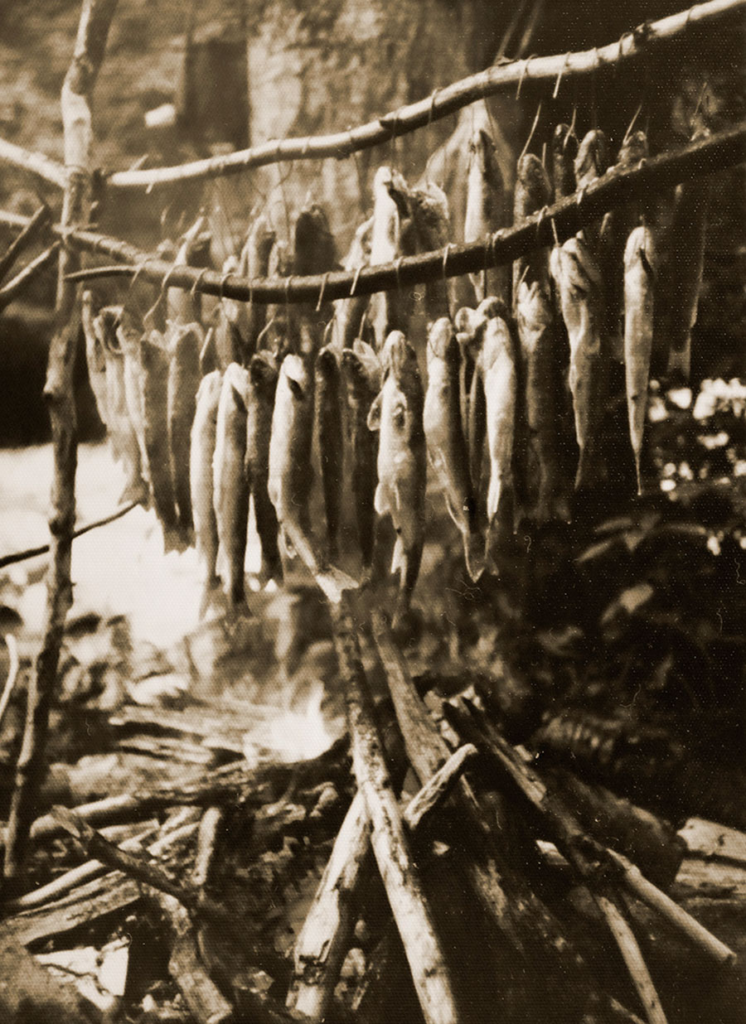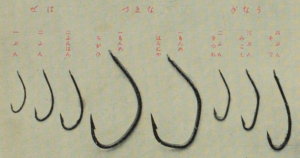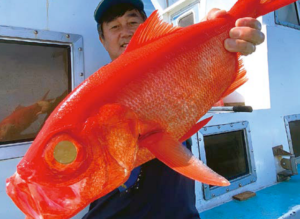Origin of Tenkara Style Fishing
Tenkara (Japanese traditional fly fishing) is now established as one of the major fishing styles in the freshwater fishing market in Japan. Many people are enjoying this in many types of streams, where main target fish live. In Japan, there are even artificial fisheries dedicated to Tenkara.
Though this fishing style can be applied to many types of fishing places, its origin is in the stream of deep and high mountain areas such as Ou mountains and Hida mountains.
In these areas, there are plenty of streams or gorges which are best suited for chars (Iwana, Whitespotted char)

Who started Tenkara
There have been hunter people called Matagi. They have been hunting and fishing deep mountains in the middle and north of Honshu island in Japan. It is said that the way Matagi people catch chars was Tenkara style.
These traditional hunters made their living by selling their games. One of their important animals were bears, but some of them fish were also important, depending on the surrounding environment. They were staying in their mountains for a long period of time, with their own mountain hut as a base camp. They traveled light, and lived with minimal belongings in the mountains. Of course, their equipment for fishing and hunting was very limited. Additionally, as the nature of their activity was commercial one, they needed to pursue the effectiveness in their activities. For these factors, in their fishing, it was a very good idea to catch many chars with a limited number (or types) of flies.

These Matagi hunters were thinking about their best fly pattern. These tying patterns have remained in some areas, as locally highly evaluated patterns. Not only the pattern but also the durability of the fly was the important point in Tenkara fly. If a fly one Matagi was using could catch many fish without being worn out easily, then he did not have to waste his time.
According to some records, in high season, Matagi people caught about a hundred pieces of char in one day fishing. And in many cases, these fish were smoked or dried in their hut to store. After several fishing days, they went down to villages to sell or exchange them with food such as rice.

What they faced to catch chars were narrower streams, streams with various height gaps, many different sizes of waterfalls or water running between rock walls.

Kurobe river, image from this site.
And they had to manage the bush hanging over the river.

Matagi people wandered their mountains with their hunting and fishing equipment. They had to be very selective in their gears.

Tenkara tackle
All this background information shows us why Tenkara tackle is just as we see presently.
It uses a relatively shorter rod than normal stream angling with baits. Anglers to fish with a bait in a stream take the whip rod of 4.5 to 5.4 m with the line about the same as the rod length. On the contrary, Tenkara rods are about 3.0 or 3.6 m. And it makes the transportation easier to have this telescopic rod can be packed into short.
While the rod is shorter, its line is longer than the rod length. It allows the Tenkara angler to reach the spot with good casting ability. To make his casting easier, from its beginning, the stiffer or thicker main line is used. Before the nylon monofilament line was invented, the braided horse tail was used, often braided into tapered mainline.
Some of you may have found it strange that the classical Tenkara angler does not carry a landing net. To travel light, a landing net is not the right companion, because it cannot be stowed into small volumes if you take the net with decent catching function. Their solution is to go without it. They land the fish by hand.

To know that Tenkara is enjoyed globally is great. Its simplicity is highly appreciated for many people and this concept is applicable in various situations. I assume this Tenkara will be applied to new areas of fishing, and I am looking forward to seeing its expansion. Along the course, it would be even better if you know a little about its history from this article.

